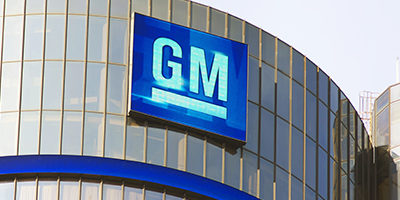%
Jubak’s Picks Performance 1997-2019
Jubak’s Picks
Buy and hold? Not really.
Short-term trading?
Not by a long shot.
So what is the stock-picking style of The Jubak’s Picks portfolio?
Click to expand...
Click to View the Jubak’s Picks Portfolio
I try to go with the market’s momentum when the trend is strong and the risk isn’t too high, and I go against the herd when the bulls have turned piggy and the bears have lost all perspective. What are the results of this moderately active — the holding period is 12 to 18 months — all-stock portfolio since inception in May 1997? A total return of 584% as of December 31, 2019. That compares to a total return on the S&P 500 stock index of 335% during the same period.
%
Top 50 Stocks Performance 2019
Top 50 Stocks
This long-term, buy-and-holdish portfolio was originally based on my 2008 book The Jubak Picks.
Trends that are strong enough, global enough, and long-lasting enough to surpass stock market averages.
Click to expand...
Click to view the Top 50 Stocks Portfolio
In The Jubak’s Picks Portfolio I identified ten trends that were strong enough, global enough, and long-lasting enough to give anyone who invested in them a good chance of beating the stock market averages.
To mark the publication of my new book on volatility, Juggling with Knives, and to bring the existing long-term picks portfolio into line with what I learned in writing that book and my best new ideas on how to invest for the long-term in a period of high volatility, I’m completely overhauling the existing Top 50 Picks portfolio.
You can buy Juggling with Knives at bit.ly/jugglingwithknives
%
Dividend Income Performance 2021
Dividend Income
Every income investor needs a healthy dose of dividend stocks.
Why bother?
Why not just concentrate on bonds or CDs?
Click to expand...
Click to view the Dividend Income Portfolio
Because all the different income-producing assets available to income investors have characteristics that make them suited to one market and not another. You need all of these types of assets if you’re going to generate maximum income with minimum risk as the market twists and turns.
For example: bonds are great when interest rates are falling. Buy early in that kind of market and you can just sit back and collect that initial high yield as well as the capital gains that are generated as the bonds appreciate in price with each drop in interest rates.
CDs, on the other hand, are a great way to lock in a yield with almost absolute safety when you’d like to avoid the risk of having to reinvest in an uncertain market or when interest rates are crashing.
Dividend stocks have one very special characteristic that sets them apart from bonds and CDs: companies raise dividends over time. Some companies raise them significantly from one quarter or year to the next. That makes a dividend-paying stock one of the best sources of income when interest rates start to rise.
Bonds will get killed in that environment because bond prices will fall so that yields on existing bonds keep pace with rising interest rates.
But because interest rates usually go up during periods when the economy is cooking, there’s a very good chance that the company you own will be seeing rising profits. And that it will raise its dividend payout to share some of that with shareholders.
With a dividend stock you’ve got a chance that the yield you’re collecting will keep up with rising market interest rates.
But wouldn’t ya know it?
Just when dividend investing is getting to be more important—becoming in my opinion the key stock market strategy for the current market environment—it’s also getting to be more difficult to execute with shifting tax rates and special dividends distorting the reported yield on many stocks.
I think there’s really only one real choice—investors have to pull up their socks and work even harder at their dividend investing strategy. That’s why I revamped the format of the Dividend Income portfolio that I’ve been running since October 2009. The changes aren’t to the basic strategy. That’s worked well, I think, and I’ll give you some numbers later on so you can judge for yourself. No, the changes are designed to do two things: First, to let you and me track the performance of the portfolio more comprehensively and more easily compare it to the performance turned in by other strategies, and second, to generate a bigger and more frequent roster of dividend picks so that readers, especially readers who suddenly have a need to put more money to work in a dividend strategy, have more dividend choices to work with.
Why is dividend investing so important in this environment? I’ve laid out the reasons elsewhere but let me recapitulate here. Volatility will create repeated opportunities to capture yields of 5%–the “new normal” and “paranormal” target rate of return–or more as stock prices fall in the latest panic. By using that 5% dividend yield as a target for buys (and sells) dividend investors will avoid the worst of buying high (yields won’t justify the buy) and selling low (yields will argue that this is a time to buy.) And unlike bond payouts, which are fixed by coupon, stock dividends can rise with time, giving investors some protection against inflation.
The challenge in dividend investing during this period is using dividend yield as a guide to buying and selling without becoming totally and exclusively focused on yield. What continues to matter most is total return. A 5% yield can get wiped out very easily by a relatively small drop in share price.
Going forward, I will continue to report on the cash thrown off by the portfolio—since I recognize that many investors are looking for ways to increase their current cash incomes. But I’m also going to report the total return on the portfolio—so you can compare this performance to other alternatives—and I’m going to assume that an investor will reinvest the cash from these dividend stocks back into other dividend stocks. That will give the portfolio—and investors who follow it—the advantage of compounding over time, one of the biggest strengths in any dividend income strategy.
What are some of the numbers on this portfolio? $29,477 in dividends received from October 2009 through December 31, 2013. On the original $100,000 investment in October 2009 that comes to a 29.5% payout on that initial investment over a period of 39 months. That’s a compound annual growth rate of 8.27%.
And since we care about total return, how about capital gains or losses from the portfolio? The total equity price value of the portfolio came to $119,958 on December 31, 2012. That’s a gain of $19,958 over 39 months on that initial $100,000 investment or a compound annual growth rate of 5.76%.
The total return on the portfolio for that period comes to $49,435 or a compound annual growth rate of 13.2%.
How does that compare to the total return on the Standard & Poor’s 500 Stock Index for that 39-month period? In that period $100,000 invested in the S&P 500 would have grown to $141,468 with price appreciation and dividends included.) That’s a total compounded annual rate of return of 11.26%.
That’s an annual 2 percentage point advantage to my Dividend Income portfolio. That’s significant, I’d argue, in the context of a low risk strategy.
Portfolio Related Posts
The big pay off for Eli Lilly is still ahead
On Wednesday the Food and Drug Administration approved Mounjaro from Lilly, as an obesity drug, after clinical trials showed that patients lost an average of 18% of their body weight. The drug will be marketed as Zepbound in the obesity market. This puts Lilly into direct competition with the wildly popular Wegovy weight-loss drug from Novo Nordisk (NVO)
Apple revenue falls again, warns holiday quarter will be flat
So let’s see how the market takes this tomorrow. Today stocks staged an impressive upside more. The Standard & Poor’s 500 closed up 1.89% and the NASDAQ Composite ended the day 1.78% higher. The small cap Russell 2000 was the day’s best performer with a win of 2.67% Tomorrow? Well, the October jobs report released at 8:30 will certainly help set the tone for the day with a weak report likely to reinforce the belief that the Federal Reserve is done aiding interest rates. But given how much of the recent bounce has been fueled by a return of optimism about technology stocks, it’s likely that Apple’s disappointing results, announced after the close of trading today, Thursday, November 2, will determine the direction of the trend.
The biggest good news from Barrick Gold’s earnings aren’t the earnings
Yesterday, Thursday, November 2, Barrick Gold (GOLD) reported earnings of 24 cents a share for the company’s this quarter. That was ahead of the 21 cents a share consensus estimate among Wall Street analysts. In the third quarter of quarter of 2022, the company reported earnings of 13 cents a share. The surprise was the fourth for Barrack in the last four quarters. But to me other news overshadowed the earnings themselves.
Sell GM and Ford sometime between now and December 13
On my subscription site JubakAM.com I added Step #7 to my Special Report: 8 Steps to Protect Your Portfolio from the Global Debt Bomb today. And my advice was to sell Ford and General Motors sometime between now and before the December 13 meeting of the Federal Reserve. Here’s what I wrote in that Special Report.
Amazon and Intel both soar on earnings but don’t take the wider market up with them–that’s not a good sign
Yesterday, both Amazon (AMZN), a current market leader, and Intel (INTC), a former market leaders and still an important technology sector stock, both reported really–I mean really–strong earnings for the their quarter. Today, the individual stocks were up. Amazon gained a huge 6.83% and Intel was up an even huger 9.29%. But they didn’t take the wider market with them.
Selling utilities Duke and NiSource on higher yields elsewhere
Today, in my Special Report: 8 steps to Protect Your Portfolio from the Globlal Debt Bomb on my JubakAM.Com subscription site, I advised raising some cash my selling two utility stocks, Duke Energy (DUK) and NiSource (NI) out of my Dividend Portfolio.
Tech earnings take spotlight this week–but we also get consumer and oil company reports
Investors see a ton of third-quarter earnings reports this coming week with news from Microsoft, Amazon, Meta Platforms, and Alphabet quite capable of moving the entire market. We’ll also get more consumer company (Coca-Cola and Kimberly-Clark for example) reports to show whether last week’s higher revenue but lower volume pattern continues. And Wall Street is expecting negative new from oil companies ExxonMobil (XOM) and Chevron (CVX) when they both report on Friday.
PepsiCo beats on earnings, raises guidance
Clearly, inflation isn’t bad for everyone. Not if you have pricing power, anyway. Today, PepsiCo (PEP) reported earnings and sales that a beat Wall Street estimates, and raised its guidance for the next quarter.










